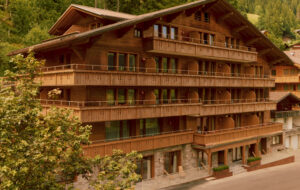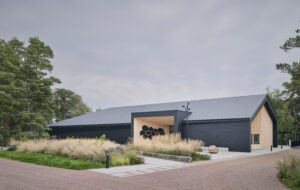


words Corinna Dean
The Gama site is one of the most important Cold War monuments in Europe. English Heritage (EH) considers it to be as important as Stonehenge, and recently declared it a scheduled monument. Now it is for sale, and could be turned into a mushroom farm, a waste recycling plant or a dog-training venue.
Gama is the Ground-launched cruise missile Alert and Maintenance Area at Greenham Common, near Newbury in Berkshire.
Occupying a significant proportion of the common, Gama boasts a sombre monumentality which befits its recent past. The site was chosen in 1980 as one of six bases in Europe for the deployment of Ground-Launched Cruise Missiles, but now lies unoccupied and prey to the scrap-metal hunters, go-cart riders and curious visitors of Cold War monuments. The perimeter of the site soon became the focus of the women’s peace movement where they set up camp to highlight their campaign against nuclear weapons. As a result of the Intermediate-Range Nuclear Force Treaty signed in June 1988 by Presidents Reagan and Gorbachev, operations at Greenham were decommissioned and in 1993 the site was declared surplus to military requirements.
Rob Perrin, EH’s Inspector of Ancient Monuments for the South East Region, said: “The site is as significant as you can get. As a scheduled monument, it has the same protection as a bronze age burial mound or a medieval castle. It had the peace protesters, which was unique in Europe. The missile shelters are the iconic bit but the whole area is steeped in military history.”
Scheduled monuments are usually disused historic sites, such as earthworks and ruined castles. The other categories of protection – listed buildings – are reserved for buildings and monuments still in use.
He added: “It is of national importance. It ranks the same as any other scheduled monument – including Stonehenge.”
Defence Estates recently put the 30ha site up for sale, inviting applicants to propose a management scheme and new uses for the site. The price guide for the site is thought to be £100,000.
EH rushed through the scheduled monument protection in March. “When we heard it was going to be sold, we fast-tracked the scheduling,” says Perrin.
Perrin said proposals submitted included a mushroom farm, a venue for car-boot sales and a “palatial residence”. Another bidder proposed holding re-enactments of missile parades complete with Greenpeace campaigners.
Defence Estates has narrowed the field down from 50 to five bidders, and a winner is expected to be announced this month. Now the site has scheduled monument protection, the winning bidder will need to meet the approval of EH. “You can’t do anything with it without the permission of the secretary of state, who will act on our advice,” said Perrin.
The site, still separated by seven high-security fences, boasts an imposing collection of structures: six former triple missile silos with three bomb-blast resistant steel doors operated on piston mechanisms protecting the rear and front openings of the 50m x 15m silos. The construction of the silos consists of two-metre thick reinforced concrete slabs, three metres of earth and rubble and a further 600mm of anti-blast slab.
To camouflage the silos from aerial view, landscaped earth mounds majestically embed the side walls of the constructions, imitating a land artscape. Five former storage bunkers named igloos sit in the low-lying area of the site named Draytons Gully, constructed using high-quality shuttering work, with details such as heat-resistant fluorescent fittings. Flanking walls with the same precision shuttering sit parallel to the igloos’ openings to reduce the damage from thermonuclear airburst explosion in the event of an enemy attack.


















